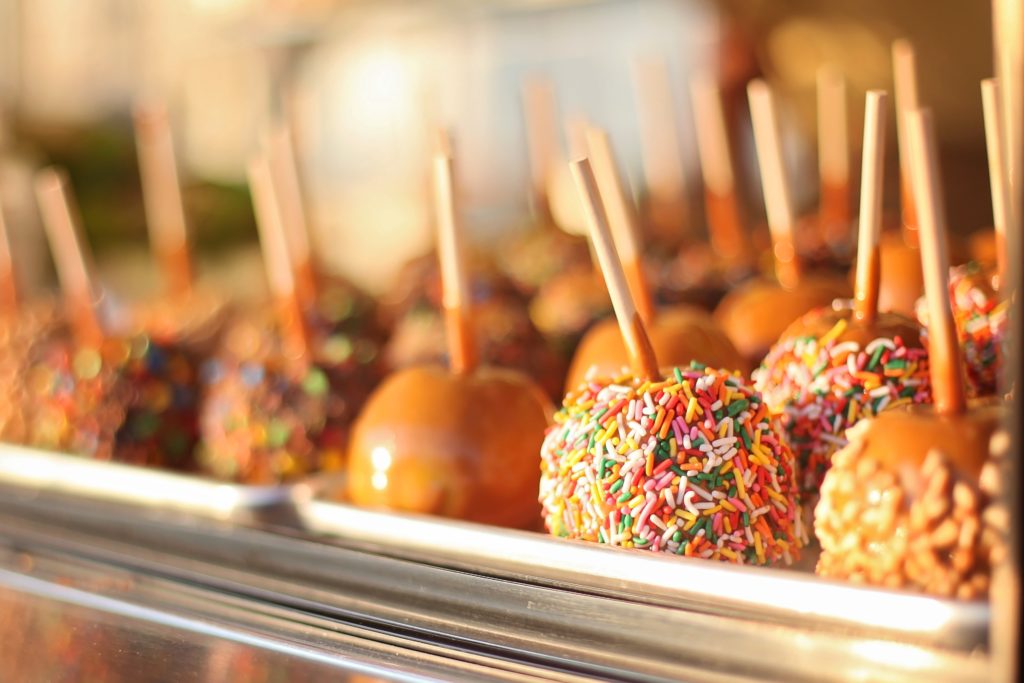All fields are required
Posted in Listeria,Our Blog,Outbreaks & Recalls on March 9, 2019

The CDC has confirmed that caramel apples were behind an outbreak of listeria in 2017. Government regulators had long suspected as much, and we wrote about the incident last year, but this is the first time that we’ve received official government confirmation as to the cause of the Caramel Apple Outbreak.
Normally, listeriosis isn’t linked to caramel apples. In 2015, however, investigators at the CDC made the link between the sweet seasonal treat and an outbreak of the dangerous foodborne pathogen that’s more commonly linked to animal products like meat and cheese.
Then, in the fall of 2017, three more people fell ill with listeriosis. The cause wasn’t immediately clear; all three patients were hospitalized, bacterial samples were taken, and investigators began the process of asking them about what they’d done and eaten recently.
Genetic testing on the listeria isolates taken from patients showed a high degree of relatedness, indicating that the three men had probably gotten sick from a common source and that the cluster of listeria cases constituted a single outbreak.
Investigators asked the men about what they’d eaten in the time leading up to the outbreak. A common link emerged: all three men had purchased and eaten pre-packaged caramel apples in the time before they got sick. None of them had any leftover apples available for testing, but one of the patients did have a grocery receipt that named the specific brand of caramel apple that he’d eaten.
So, working off that lead, state and local investigators turned to the grocery stores. They visited the locations where the patients reported having purchased caramel apples. Upon checking the stores’ records, they found that the patients affected by the outbreak had all purchased the same brand of caramel apples. The apples were a seasonal product, and they were already mostly gone at the time of the investigation – gone, that is, save for the store that the investigators visited in Illinois, which still had some in stock.
The caramel apples were taken back to the lab, where investigations for listeria were performed. No listeria was found. Investigators then visited the production facility where the caramel apples were made. They didn’t find any listeria there, either. They visited a wholesale supplier of the apples. They found some listeria on one of their swabs there, but it wasn’t the same listeria that they had isolated from the patients.
So, in the end, investigators weren’t able to find any of the same bacteria on the caramel apples, at the caramel apple production facility, or at the apple farm that provides fruit to that facility. Still, they think that the caramel apples were responsible. What gives?
It goes back to the patient interviews. To quote from the report: “Although the outbreak strain of L. monocytogenes was not isolated from caramel apples or their production environment, the epidemiologic evidence indicated that caramel apples were the suspected vehicle in this outbreak. All outbreak-associated ill persons consumed a specific brand of a relatively uncommon food product in the month before their illness onset, and all were infected with indistinguishable L. monocytogenes strains.” In other words, the caramel apples were the sole link between the three individuals, and the evidence is strong that they all got sick after eating the same thing.
Secondly, there’s historical evidence to support caramel apples being the cause. After all, listeria infected people via caramel apples in the 2014-2015 outbreak. Furthermore, the caramel apples in the 2015 outbreak were also sold ready-to-eat, and ready-to-eat foods are commonly the cause of foodborne illness outbreaks.
How would listeria get onto a caramel apple, though? This is something we talked about a little in our previous article on this outbreak. You’d think that the application of boiling-hot caramel would be enough to kill off any listeria or other foodborne pathogens.
When you dip an apple in caramel, however, it isn’t a sure thing that you’re going to kill off everything on the surface. Air bubbles can form, and the caramel isn’t always uniformly hot; it’s possible for listeria to survive in small pockets where the temperature stays low enough to ensure their survival.
One way that this could happen has to do with the stick by which caramel apples are held. If listeria is living right on the part of the apple where the stick goes in, it could take advantage of the opening created by the stick to slip inside of the apple.
If you’re listeria, there’s another advantage to using the opening created by the stick: usually, piercing an apple with a stick compresses the flesh, expressing some apple juice. Apple juice is exactly what bacteria like: it’s a liquid medium that’s rich in sugars, which means they have both room and board. Listeria entering through just such an opening would have protection from the hot caramel, a place to live, and plenty of food to eat.
That’s all theoretical, of course. We don’t even know for sure that the listeria was from the caramel apples. As the CDC pointed out, however, the apples are the most likely explanation for the 2017 outbreak. Sometimes, we don’t get lab positives for the presence of the pathogens on the foods that we suspect; instead, we have to work backwards from what we do know. Do that, and the caramel apple explanation seems pretty likely. So next time you’re looking for a sweet treat on Halloween, you might do well to avoid the pre-packaged caramel apples at the store. They could give you a lot more than a fright. And if you get sick, contact our Listeria Lawyer for a consult.
By: Sean McNulty, Contributing Writer (Non-Lawyer)